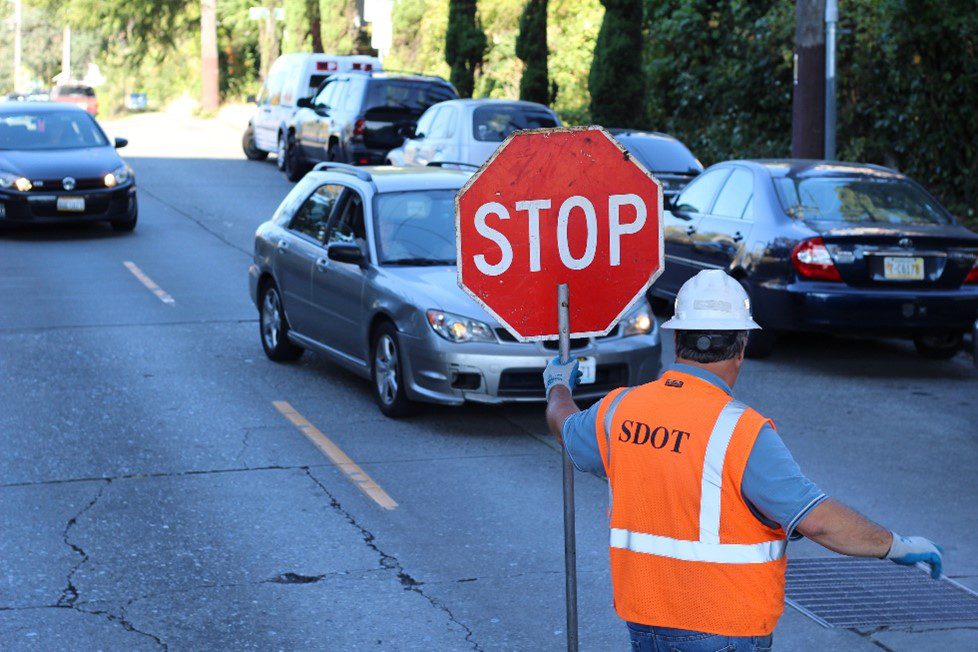 An SDOT Response Team truck parked in Seattle. Photo: SDOT
An SDOT Response Team truck parked in Seattle. Photo: SDOT Blog stats: 600 words | 3-minute read
At-a-glance:
- This week – November 18-22, 2024 – is Crash Responder Safety Week.
- This national campaign is sponsored by the Federal Highway Administration. The focus is on safety around traffic incidents, particularly for people driving.
- This year’s theme is “Responders Ahead! Reduce Your Speed as You Proceed”.
- Help protect our first responders by slowing down and moving over, putting away your cell phone, and reporting incidents when you encounter them.
- Keeping our first responders safe is important all year, not just this week. Thank you for your time and attention to this important matter.
Crash Responder Safety Week is a time for everyone in our community to come together, learn more, and practice cautious driving to protect first responders and all travelers on our streets.
Our SDOT Response Team helps keep traffic moving 24/7 by promptly removing debris in the street, moving vehicles out of traffic lanes after a crash or collision, assisting stranded drivers, providing emergency traffic control for incidents, responding to issues with traffic signals, responding to landslides, removing tree debris from the right-of-way, and more. The team was launched in 2018.

Read this previous blog post for additional details on how the Traffic Incident Management (TIM) program and our Transportation Operations Center (TOC) work. Please visit our website for guidance on how to report issues on city streets. This includes when to dial 911 if you encounter a vehicle collision, emergency, or life-threatening situation – and when to contact us to report non-urgent situations through our Find It, Fix It app, by phone, or by email. You can also learn about the services our SDOT Response Team provides.
The Washington State Department of Transportation (WSDOT) Incident Response Team responds to incidents along state highways, ranging from assisting drivers with flat tires or running out of gas to responding to major traffic incidents.
How the public can help
1) Slow down and move over
Slow down for emergency response vehicles and around active work zones when their lights are flashing. When possible, drivers are required to move over one lane to allow emergency vehicles to pass.

2) Stay aware
Silence your electronic devices and put them away. Give all your attention to the road. Lives are at stake when we fail to be attentive to our surroundings. Do your part in making sure you and everyone around you can get home safe.

3) Report incidents
Detecting and clearing incidents quickly helps minimize travel impacts. Please report collisions, emergencies, and blocked travel lanes as soon as possible by calling 911 or using the methods listed on our website if they occur on city streets.
Here is more information on what to do if you are involved in a collision. Please note: if you are involved in a collision and the driver is not injured, it’s not necessary to wait for law enforcement before moving vehicles. Learn more by reading this brochure.

Thank you for your time and attention – it takes everyone to keep our first responders and other travelers safe every day.